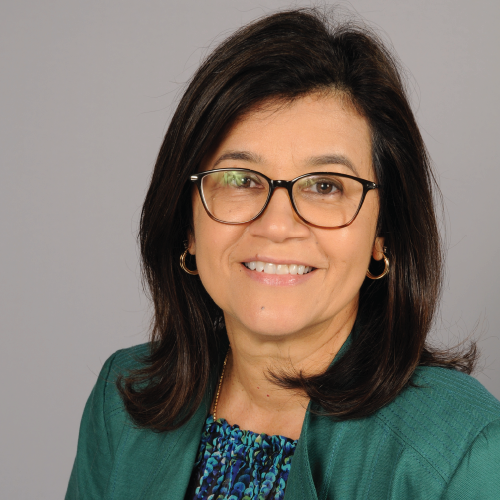Guest Post: Making the Most of Your Summer Fun(ds)—Improvement Isn’t Accidental
July 12, 2023
This is a guest post from AASA 2023-24 president, Gladys Cruz.
Like most good things, summer seems to go by in a flash. We are already celebrating National Summer Learning Week from July 10-14. Superintendents can celebrate locally in a few different ways: invite local media to visit—and do a story on—your summer programs; engage elected officials in site tours; or ask your local government for a proclamation celebrating Summer Learning Week.
Many district summer programs operate for 4-6 weeks, truly a whirlwind of learning and fun after months of preparation. This month is the perfect time to make sure you’re getting the information you need to drive improvement. Classroom and activity observations, end-of-program assessments, and intentional reflection with key stakeholders can all help you improve summer programming now and in 2024, as well as inform instructional decisions for the upcoming school year. Check out these three evidence-aligned tips (with aligned resources) to implement these practices without reinventing the wheel.
1. Observe academic and enrichment instruction and provide feedback to staff during and at the end of the program
Classroom and program observations during the summer are just as important as during the school year. Observations can illuminate strengths in instruction and operations that can be shared across classrooms or campuses. They can also highlight where mid-course corrections might be needed to achieve summer program goals. In a major, multiyear study involving five districts, researchers from RAND found that collecting information on no-show rates and attendance; time on task; instructional practice in academics and enrichment; and site climate were the most beneficial levers for improving the program, so focus your assessments accordingly. Even better: pair your observations with formative data (e.g., academic assessments and check-ins with students and staff) to get a full picture of how staff are meeting students’ needs.
It’s also important to be transparent with all staff and stakeholders about how program quality is being measured (ideally before the program begins) as well as how feedback will be delivered and discussed. Ensure that staff are part of two-way debriefs that allow them to self-identify strengths and areas for improvement as well as provide feedback on preparation and resources.
Explore these Classroom Observation Resources from the Summer Learning Toolkit:
Classroom Observation from Bellwether Education Partners: Includes indicators to assess learning environment, student engagement, and instructional quality
- Guidance (.pdf)
- Tool (.docx)
- Download All (.zip)
Dallas Academic Lesson Observation Form: Includes measures of time on task, teacher engagement, transitions, and use of technology
- Guidance (.pdf)
- Sample (.pdf)
- Download All (.zip)
Pittsburgh Enrichment Activity Observation: Includes tools for assessing the quality of activities and providing feedback
- Guidance (.pdf)
- Sample Observation (.pdf)
2. Conduct end-of-program assessments
End-of-program academic assessments are critical to understanding the impact of your summer program. Assessments provide important data to help administrators and teachers prepare for the next school year and begin planning for next summer. Questions your data may help you answer include: What knowledge and skills did participating students master or make progress on? What skills are they still struggling with? Where did our curriculum and instruction hit the mark, and where did it not match expectations? Conduct curriculum-aligned assessments as close to the end of the program as possible to capture the program’s full impact.
3. Conduct focus groups/surveys to gather feedback from key stakeholders including students, families, staff, and partners
Before staff, students, and families scatter for the rest of the summer break, and while the experience is still fresh, gather feedback on the program from key stakeholders. Align your questions to the goals of the program. For example:
- You might ask students: What new things did you learn this summer? How did you feel walking in each day? Did you make a new friend or experience a sense of belonging?
- You might ask families: How well did the program meet your needs and expectations this summer? How well did the program communicate with you about your student’s experience? Would you recommend the program to another family?
- You might ask teachers: How well did professional development and planning time prepare you for the summer? How well did the program support and recognize teachers during the summer? Would you teach in this program again?
Through observations, assessments, and feedback mechanisms, you can be sure to gather the data and information you need to improve—both during this summer’s program and for next year.
This blog is part of a Summer 2023 series that draws from evidence-based practices culled from RAND research commissioned by The Wallace Foundation. Each suggestion is accompanied by concrete resources from the online Summer Learning Toolkit to provide just-in-time support for your district’s summer learning team. (Check out the May and June blog posts for more summer advice.)
For additional ideas on how to manage an expedited planning process, view the Texas Education Agency’s Summer Learning Work Plan, which includes an April - August work plan adapted from the 12-month calendar within the Summer Learning Toolkit. For more, share Eight Key Summer Learning Practices for Elementary School Districts with your summer leadership team.



